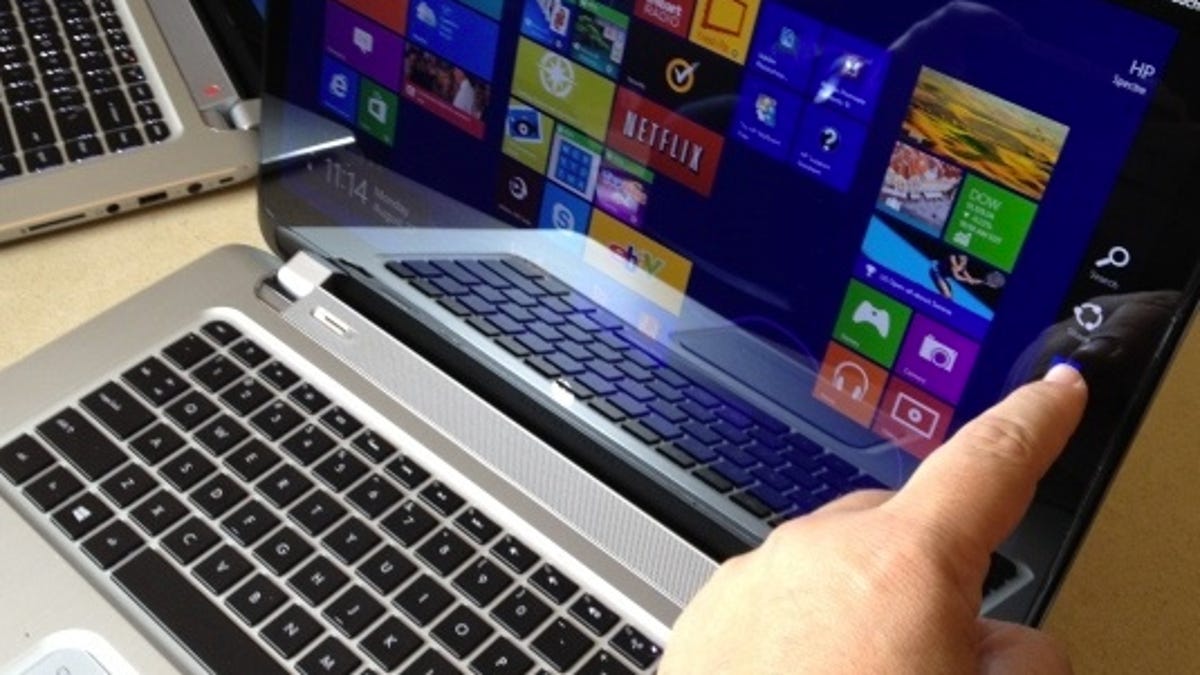How Windows 8 will shake up the laptop market
Dozens of new laptops and tablets are coming with the Window 8 launch. Here's what you need to know ahead of time.

Starting October 26, laptop shoppers will be inundated with a flood of new PCs designed around Microsoft's new operating system. In fact, I've counted about 50 new laptops, tablets, hybrids, convertibles, and all-in-ones on my back-of-the-envelope list already.
A handful of these have already been announced, a healthy chunk will be announced early in October, and the rest will simply go on sale on October 26, alongside Windows 8.
Having seen a good number of these upcoming systems in person already, I can safely outline three big trendlines that will drive laptop and related device sales through the Windows 8 launch season and into 2013. If you're looking to buy a laptop anytime soon, keep these in mind as you dig through the dozens of upcoming new choices.
Touch screens on traditional clamshell laptops are going mainstream
Adding a touch screen to a traditional clamshell laptop has always been an expensive novelty at best. I can only recall seeing a handful over the past few years, and none of them made particularly good use of the added feature.
With its not-Metro tile interface, there's a lot more you can do in Windows 8 with your fingers, and nearly every PC maker is either adding touch screens to its existing laptop lineup (usually as an added-cost option), or building entirely new modelswith that as a default.
After trying a handful out, the most surprising thing is that it's actually pretty useful, especially for flicking up and down long Web pages. And, some PC makers have been forward-thinking enough to redesign screen hinges, giving the display added resistance once you pass about 120 degrees or so.
Windows RT systems are going to be rare, and way too expensive
With full Windows 8 tablets and hybrid laptops coming in at very similar prices, it's hard to see exactly who Windows RT products(which use a ARM CPUs instead of ones from Intel or AMD) are aimed at. In fact, every RT laptop/tablet I've seen recently was given essentially the same front-loaded pitch: "It comes with Microsoft Office pre-installed!" From there, your software options are considerably more limited, and the same presumably goes for accessories and peripherals.
With many RT products expected to sell for $599 as a standalone tablet, with another $150-$200 added on for a clamshell-style keyboard dock, you're looking at some serious sticker shock, especially when you consider what $799 will buy in in a standard laptop. The big wild card in this scenario is the Microsoft Surface RT tablet, which may undercut everyone else on price (or may not).
Expect a lot of me-too hybrids and convertibles
Start with a small 11- or 12-inch tablet-style screen connected via a couple of hooks and clasps to a keyboard dock (with an extra battery built into it). When connected, the entire thing folds down like a traditional laptop. To release the screen, press a chunky rectangular button just above the keyboard.
That pretty much describes a product coming from nearly every major PC maker, down to the physical shape and placement of the release button. Sure, there are a handful of unique designs, but the vast majority of what we've seen looks like it came out of a Microsoft focus group on what Windows 8 devices should look like.
Also look for several similar "slider" laptops, with the screen sliding down over the keyboards, a couple where the screens fold back a full 360 degrees, and lots of similar-looking all-in-ones and ultrabooks.

